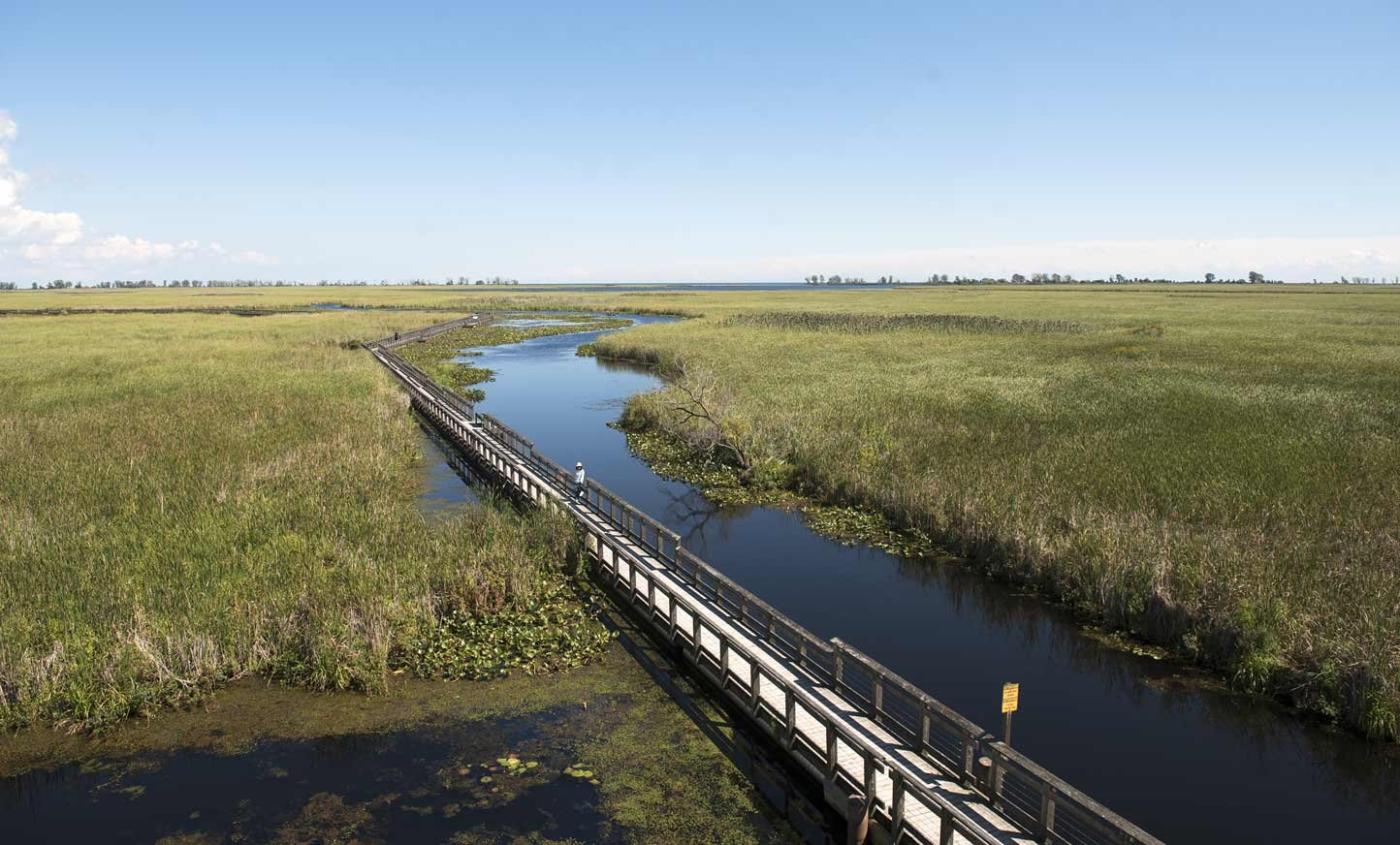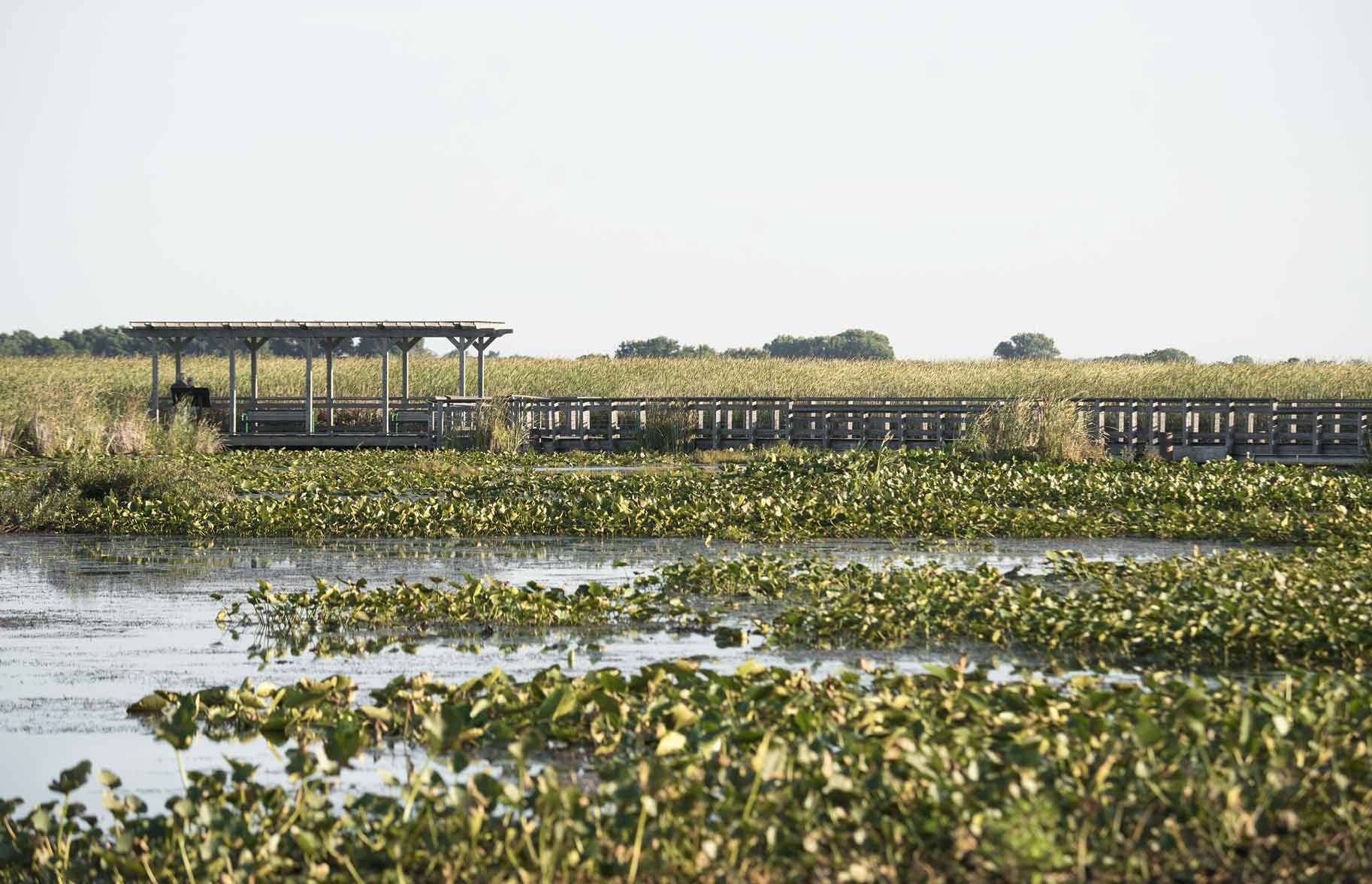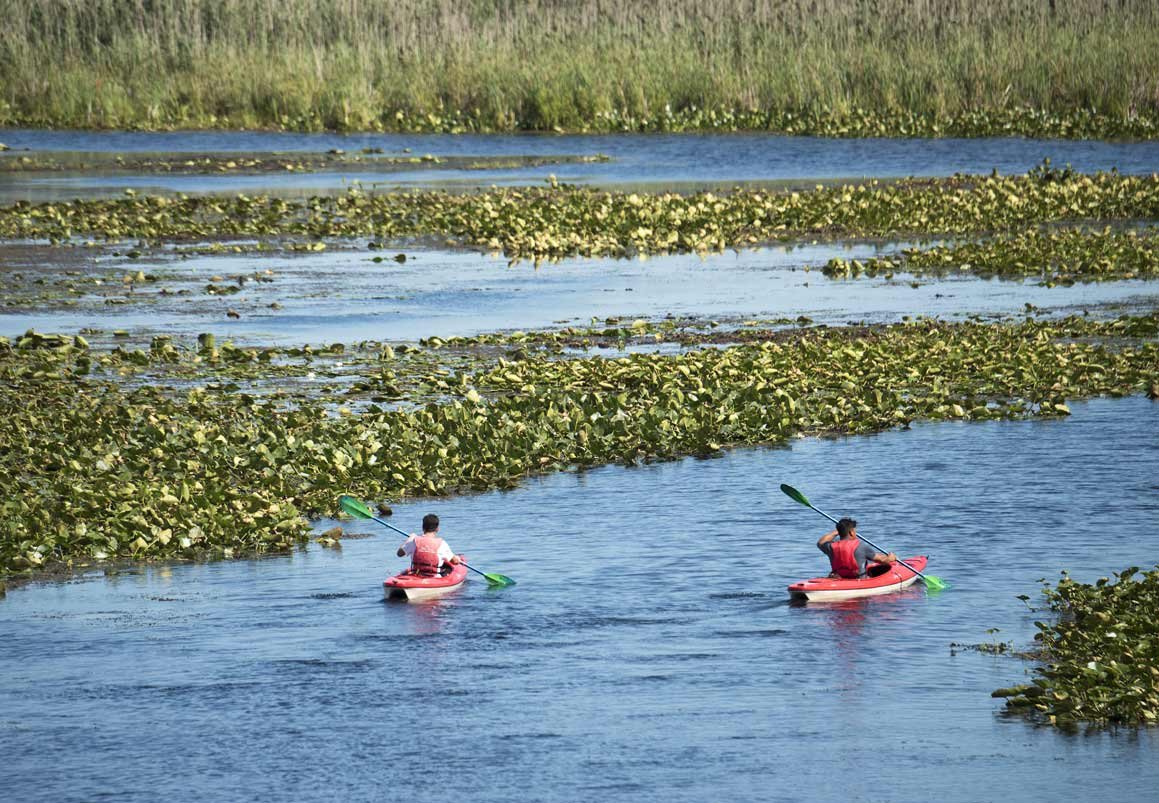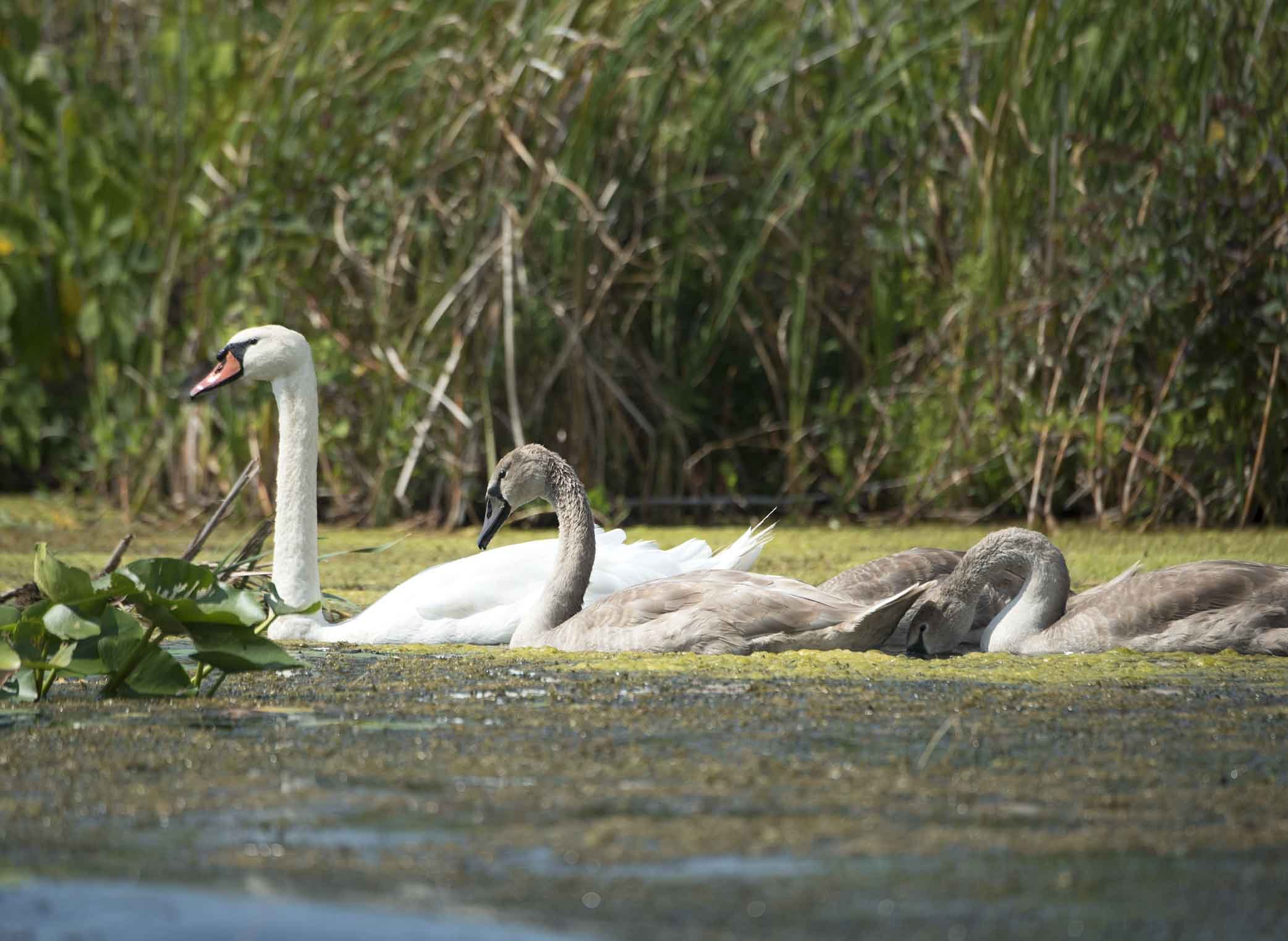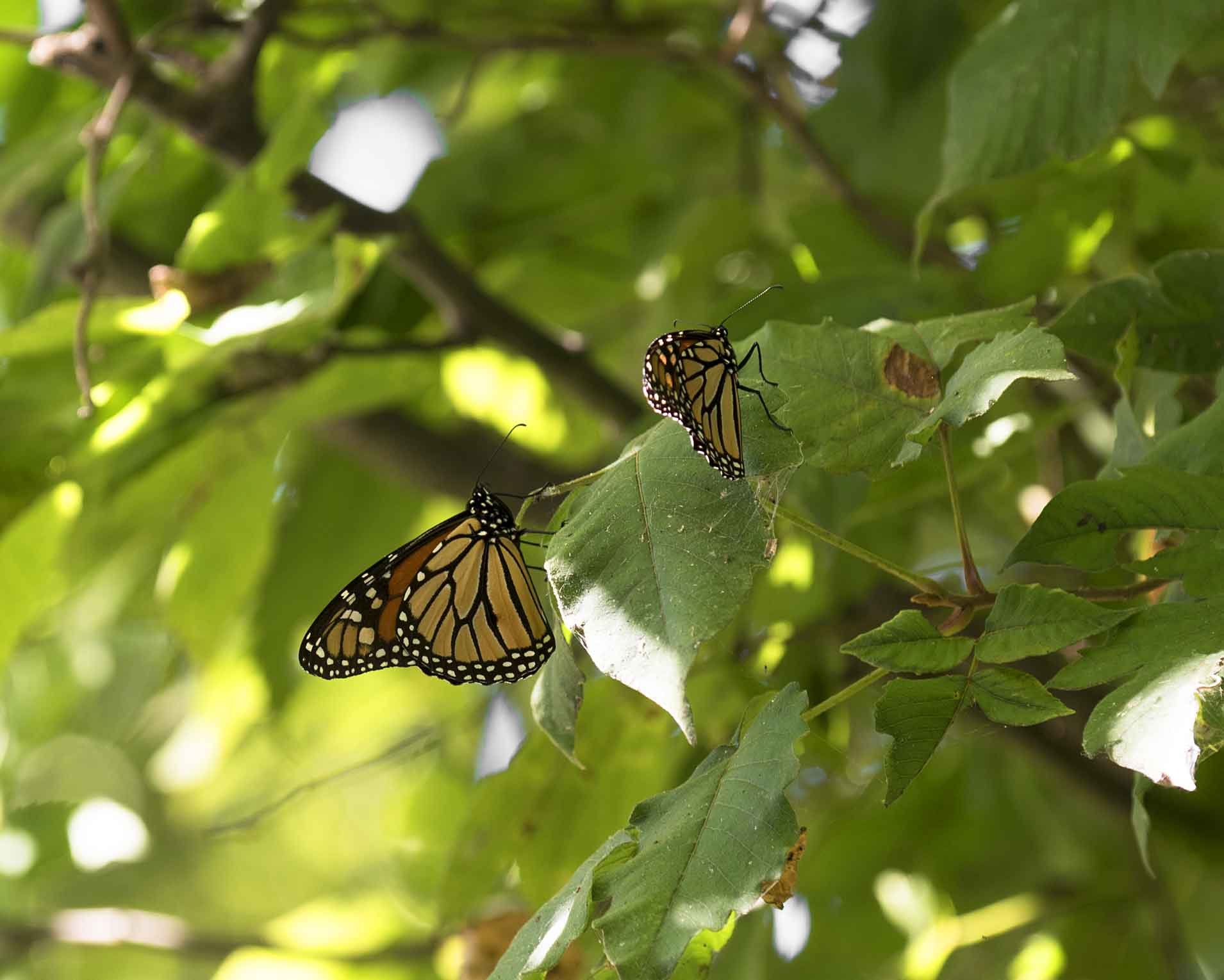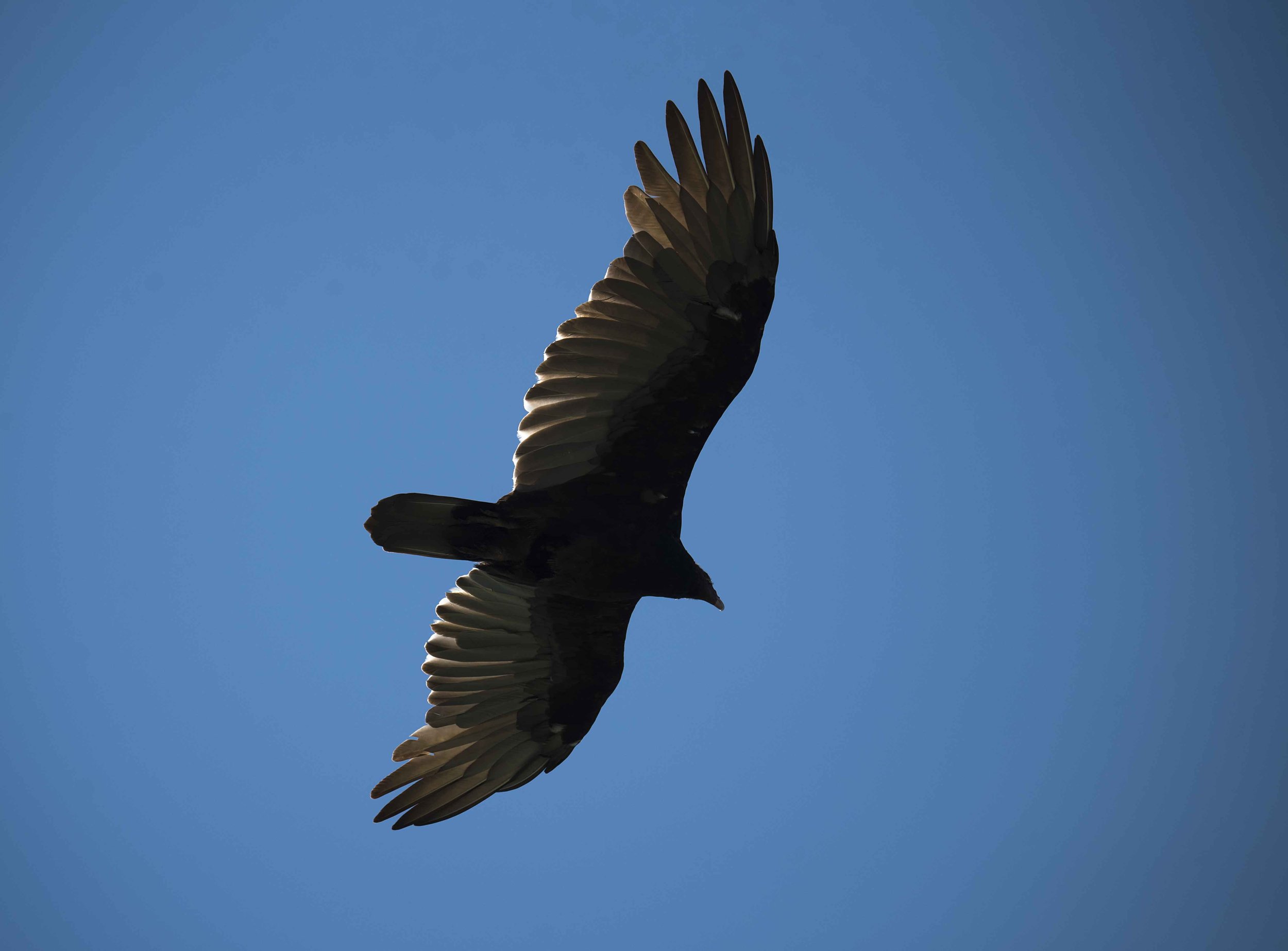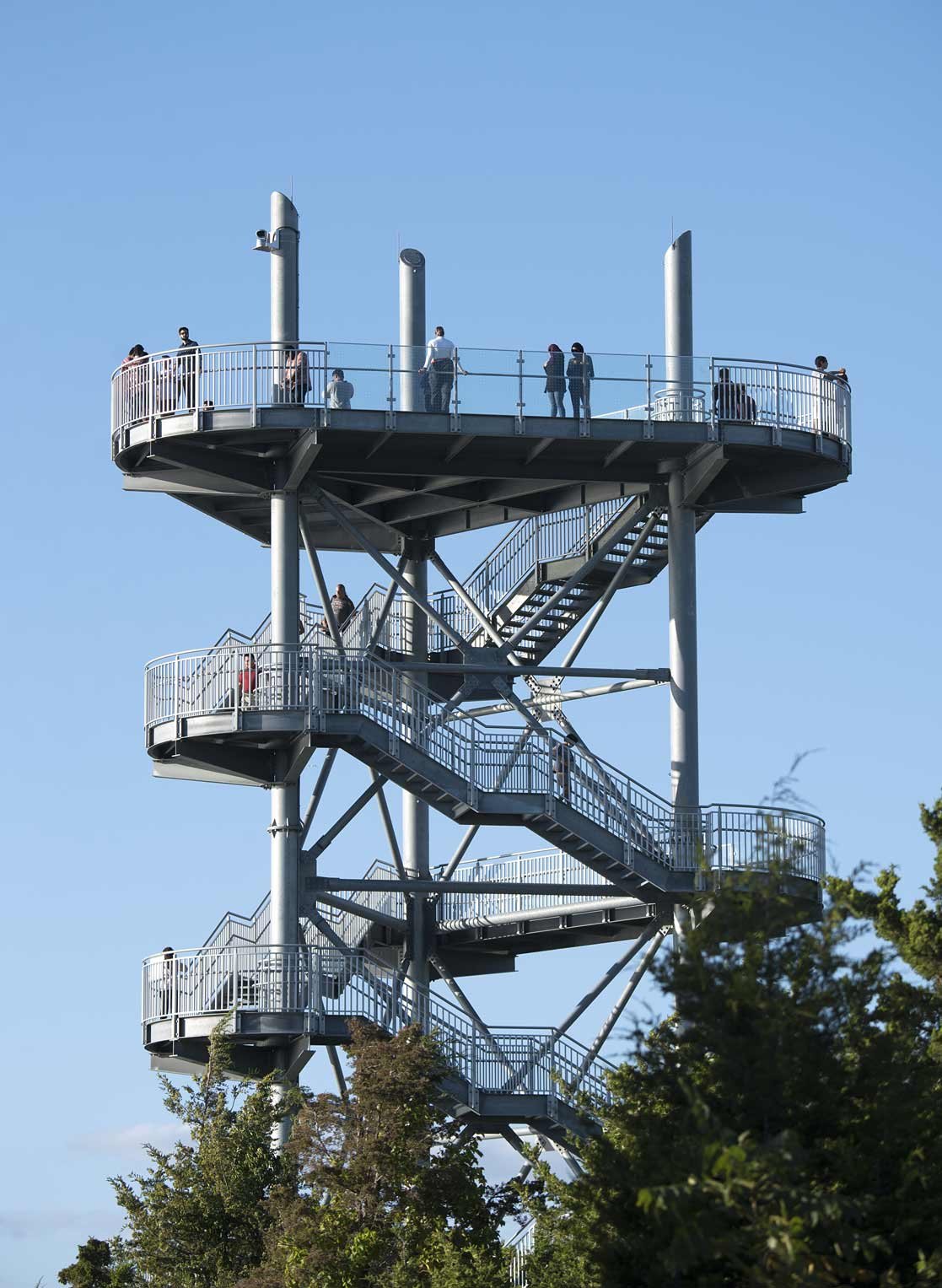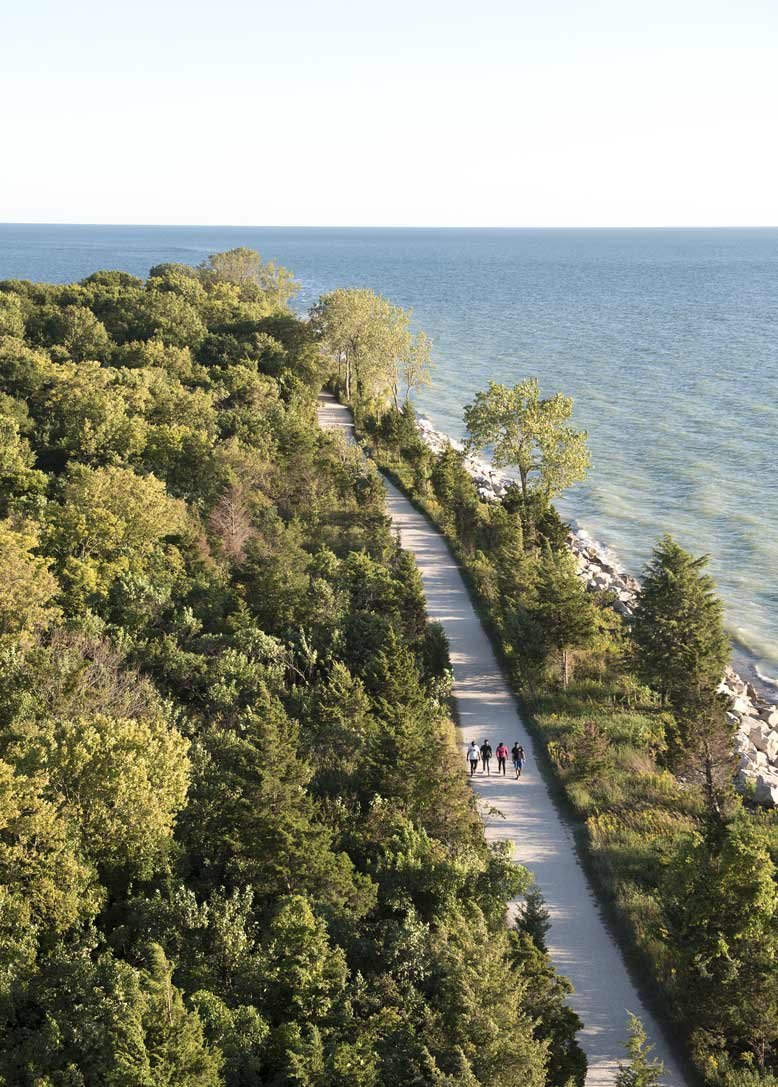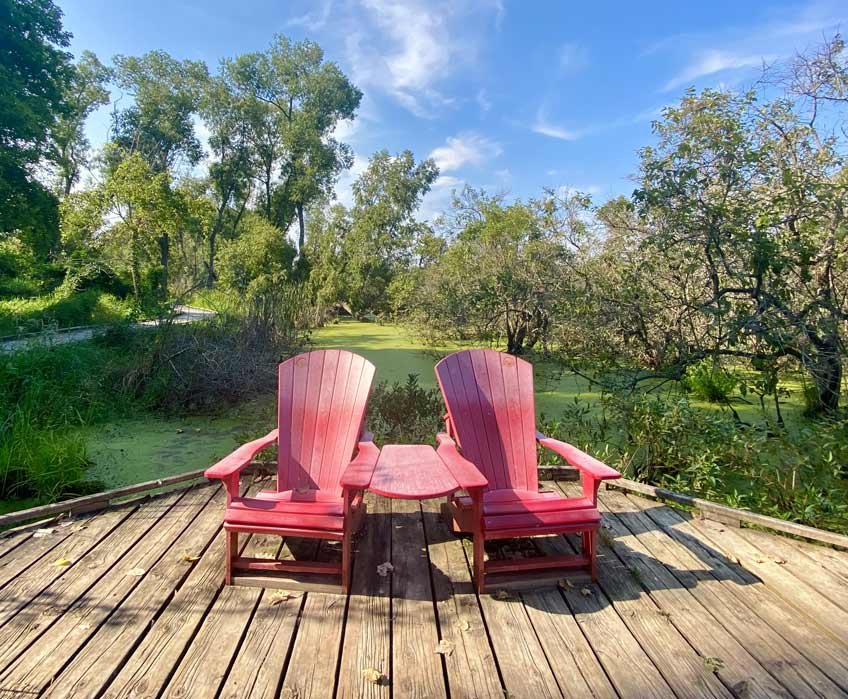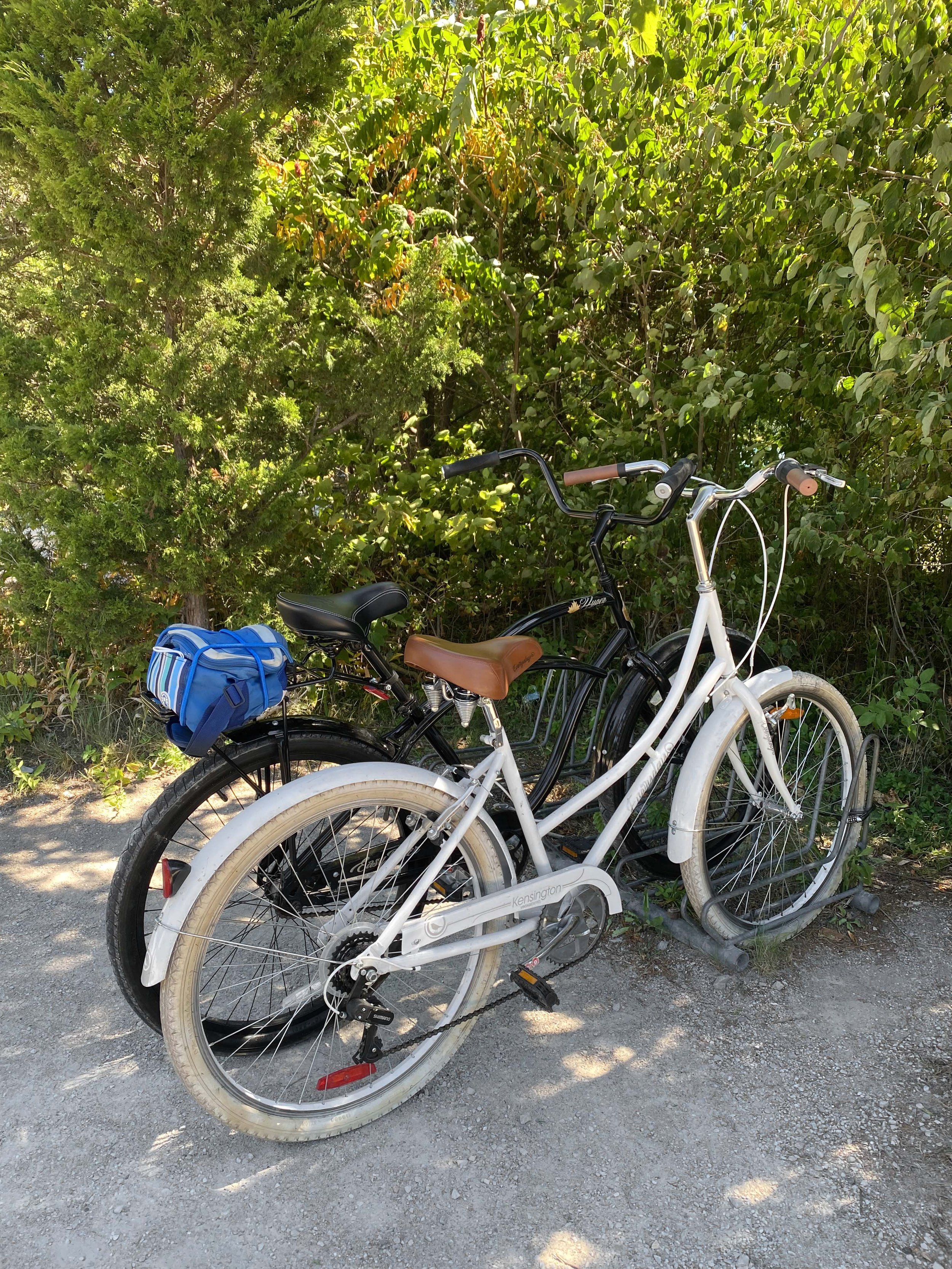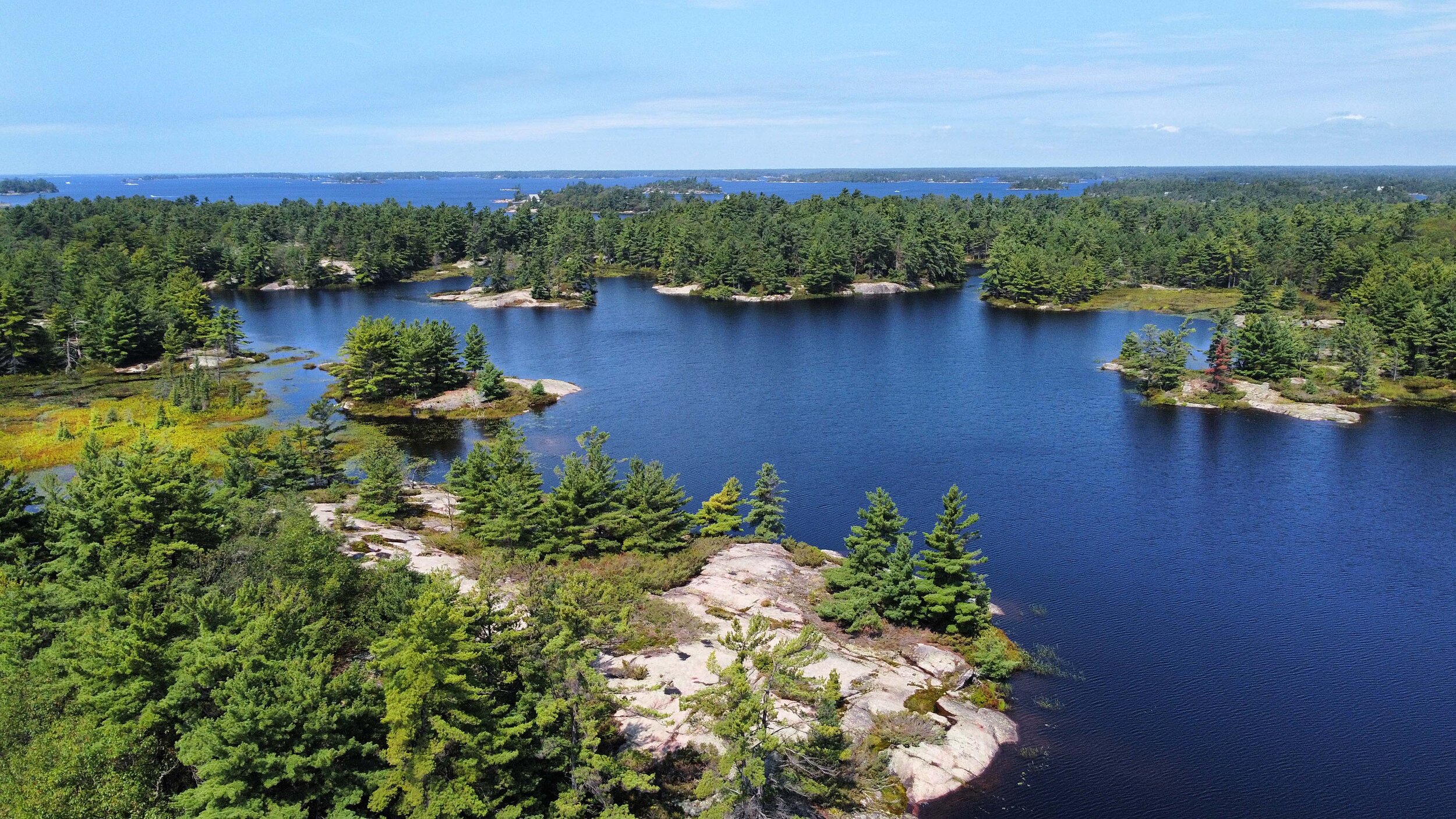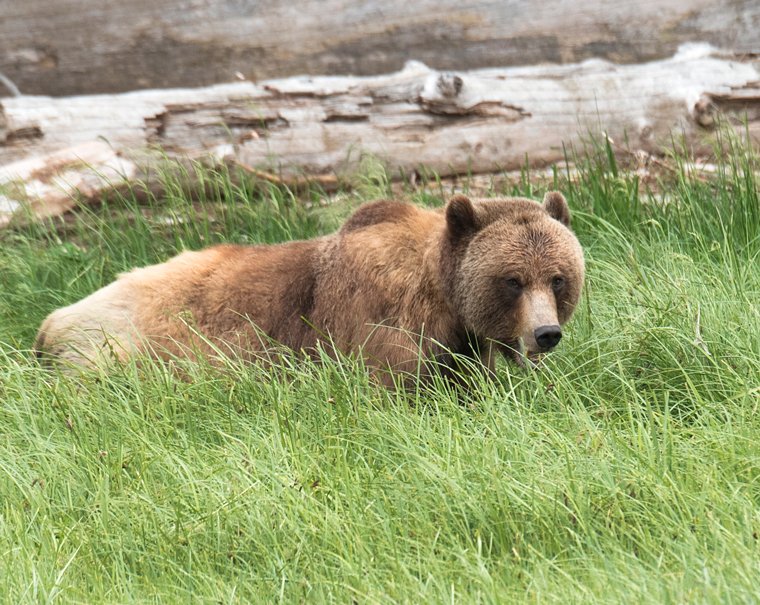A Guide to Exploring Point Pelee National Park; Top Things to see and do
Home to the southernmost point on the Canadian mainland, Point Pelee National Park is the most ecologically diverse national park in Canada. With long white sandy beaches, lush wetlands, marshes, and jungle-like woodlands, the park is full of amazing landscapes to explore, and is an excellent spot for an escape into nature.
Walk the Marsh Boardwalk
Perhaps the most iconic boardwalk in the region, over one of the largest freshwater marshes left on the Great Lakes, the Marsh Boardwalk is the most diverse habitat in Point Pelee National Park. Take a stroll along the 1 km floating boardwalk which meanders through stunning wetlands surrounded by giant cattails. Keep your eyes peeled for an abundance of wildlife including turtles, muskrat, mink, water snakes, frogs and butterflies, many of which are at risk.
Avid birders will be rewarded with sighting of numerous different species including great blue heron, red-winged blackbird, black terns, least bittern, marsh wrens, mallard ducks, double-crested cormorants, golden-crowned kinglet, greater scaup and of course, Canada geese. A family of mute swans also calls the marsh home and can often be seen directly from the boardwalk. To see recent bird observations or to record your own, be sure to visit e-bird.
At the start or end of your walk, climb the 2-storey observation tower for a bird’s-eye view of the boardwalk snaking through the lush green marsh, and take a peek through a telescope on the top platform to spot wildlife tucked away in the marsh below.
Paddle Through Secluded Ponds and Wetlands
There’s no better way to explore Point Pelee National Park’s diverse wetlands than by boat. Bring your own boat or rent from the Friends of Point Pelee, and paddle your way from the Marsh Boardwalk, through the curvy Tiessen channels into small inland ponds. When you emerge from the channel into Lake Pond you can choose to explore East Cranberry Pond, west Cranberry Pond, Redhead Pond, and even head to East Beach. Be sure to keep your eye on the directional windsock at the entrance to Tiessen channel to keep yourself oriented, and note the water levels on Lake Erie; the East Beach access can often be breached during high water levels, which creates a direct flow from Lake Erie into Lake Pond.
Go Wildlife, Bird and Butterfly Viewing
Walking along Point Pelee’s extensive trail network and scenic lookout points can provide some amazing wildlife viewing opportunities. During the spring migration, the park is one of the best inland locations to spot migratory birds in North America. With over 390 different species of birds having been recorded in the area, it’s a premier destination for birdwatchers and wildlife lovers, and one of the only locations you can spot many of these migratory species in Canada.
Each year Point Pelee serves as a stop-over point for millions of migratory monarch butterflies heading south to Mexico and Central America. If you visit in late August and early September, you’ll be able to spot clusters of bright orange butterflies hanging from branches throughout the park, sometimes numbering in the hundreds. While butterflies can be seen throughout the park, the Tip is a prime location for monarch spotting, with the treed area where the Tip Shuttle stops being a favourite resting spot. Keep an eye on the Point Pelee social media accounts for daily monarch counts during prime monarch migration season.
When you step onto many of the park’s trails, you’ll pass by numerous marshes and ponds, full of wildlife. Take a moment to pause beside one of the neon green marshes, where those with a keen eye will be able to spot perfectly camouflaged frogs hiding alongst the algae, and painted turtles sunning themselves on waterside logs. If you see small piles of reeds and branches (reminiscent of a small beaver lodge), you’re in muskrat territory. Muskrats create these watersides mounds with a combination of plant material and mud, and if you’re out for a walk at sunrise or dusk, you may catch a glimpse of these shy creatures swimming about or making repairs to their lodges. Other species to keep an eye out for are white tailed deer, beavers, rabbits, snakes, opossum, bats and even flying squirrels!
Visit the Tip, the Southernmost Point on the Canadian Mainland
Point Pelee National park is home to the most southernmost point on the Canadian mainland, and a trip to “the Tip” is a must-do for any visitor. Located 2 km (one-way) from the Visitors Centre, the Tip has a cool viewing tower providing stunning 360-degree views of the park and surrounding Lake Erie. Walk the short pathway from the viewing tower to the beach at the Tip where you can watch how the strong crosscurrents create turbulent waters. It’s important to note that no swimming or wading is permitted at the tip for safety reasons. When you see the waves and intense eddies of water you’ll understand why! Snap a selfie, watch birds fishing in the waters along the beach, and take a moment to relax and enjoy the scenery.
There are several options to reach the Tip, including walking, biking and the free park Shuttle. From May-October the park offers this handy open-air shuttle departing from the Visitors Centre. The shuttle drops you off at the Tip’s outdoor exhibit area at the start of the Tip Trail, which will lead you to the most southern tip in mainland Canada.
Walking or biking the easy 2 km (one-way) trip is a great way to reach the tip, and allows for maximum flexibility for those wanting to catch the sunrise or sunset outside of shuttle hours.
Swim, Sunbathe or Picnic on Beautiful Beaches
Point Pelee’s 20 km of smooth white sandy beaches are stunning, and those who love to spend a day in the sand will be in heaven. The Park has the longest continuous natural beach in Essex County and the beaches on each side of the peninsula are perfect for swimming, sandcastle building, or just spending a day lounging in the sun. Northwest Beach and West Beach are the most popular beaches at Point Pelee, with washrooms, change rooms and picnic areas nearby. However, there are many other access points with parking along the west side of the park allowing you to pick the perfect place to lay your towel.
East Beach is more secluded, with no facilities, but provides a tranquil spot to relax among giant driftwood logs. The beach is accessible via the short 0.5 km Shuster Trail (parking available at the Visitors Centre), and if perfect for those looking for a more private spot to relax. Keep your eyes peeled for wildlife along the way including ruby-throated hummingbirds along the path.
Hike and Bike the Trails
Exploring Point Pelee on foot is a great way to discover the history, wildlife and different landscapes in the park. The park has 12 km of hiking trails, each with unique characteristics. There are also several rustic footpaths providing leading to diverse ecosystems and unique plant life. For those looking to explore on two wheels, there are many bike-friendly trails throughout the park allowing you to explore at a quicker pace, with bike rentals are available from the Friends of Point Pelee located in the Visitors Centre. Below are some of the trails we recommend, all of which we explored during our visit.
Cactus Field Footpath – 450m
Several footpaths are located off trails throughout the park, including the Cactus Field Footpath. Take a stroll through this short but rugged trail through restored savannah and keep your eyes peeled for Prickly Pear Cactus with their signature bright yellow flowers peeking out through the brush.
DeLaurier Homestead & Trail – 1.2 km loop
This is a diverse and beautiful trail showcasing the history and diverse habitats of the park. Hike through cedar savannah, open fields and over swamps where you can catch a glimpse of the wildlife of the park, including turtles, frogs and muskrat. A historic house and barn with artifacts from the park’s cultural bygone days gives you a glimpse into the area’s past before it was turned into a national park.
Tip Trail – 1 km
When you arrive at the Tip’s outdoor exhibit, walk the easy 1 km looped trail to the Tip to marvel at the most southernly point on the Canadian mainland. Take that iconic selfie and watch birds fishing in the turbulent currents offshore. The Tip trail is also one of the best places to view dragonfly and bird migrations, as well as the annual fall monarch migration.
Shuster Trail – 0.5 km
This short trail leads you to the stunning East Barrier Beach, with giant driftwood logs lining the shore. Watch for birdlife along the trail including hummingbirds along a grove of orange flowers, and keep your eyes peeled in the swampland for muskrat, snakes and many amphibians.
Centennial Bike & Hike Trail – 4 km
This multi-use trail is ideal for both hiking or biking and takes you through a curvy shaded forest pathway extending from the Marsh Boardwalk to the Visitor Centre. The trail runs parallel to the shoreline, so be sure to pack a blanket and swimsuit and stop for some time on the sand.
Go Star Gazing
Designated as a Dark Sky Preserve in 2006, Point Pelee is one of the best places to go star gazing in Ontario. During the new moon (when the moon isn’t visible in the sky), you can marvel at millions of stars twinkling in the dark skies above. A telescope or binoculars are recommended for seasoned stargazers, and photographers will want to head to open spaces to capture beautiful long exposures.
Where to Stay
OTENTIK Tents at Point Pelee National Park
The perfect way to enjoy a trip to Point Pelee National Park is by staying in the park itself. Book one of 24 oTENTik tents located in Camp Henry, which are a cross between an A-frame cabin and a prospector tent. The oTENTik tents are equipped with four twin-sized and one double-sized bed with mattress, as well as a living area with table and chairs. Each tent also comes with a gas or wood stove for chilly nights. A handy dish kit, cooking equipment and an outdoor animal-safe food locker is provided, so you can prepare meals on your outdoor BBQ and picnic table, and dine al fresco. All tents are a short walk from the parking lot (with wagons provided to transport your gear), and washroom facilities and a dish washing area are only a short walk away. Wood, ice and a selection of snacks are available for purchase at the Camp Henry Visitors Centre along with a fun selection of Parks Canada merchandise.
Leamington, Ontario
The town of Leamington is only a short drive from Point Pelee, and is a great home base for a weekend of park exploration. Choose from a variety of accommodation from hotels and motels to B&Bs and campgrounds. On the road leading into the park, you’ll notice quaint lakeside cottages, many of which are available as Air BnB rentals for those looking for a cottagey vibe.
Insects to Watch for
Exploring in nature inevitably involves encountering bugs of all shapes and sizes, but there are several important tips to note when visiting Point Pelee National Park.
The region where the park is located has a high risk of ticks infected with the bacterium Borrelia burgdorferi, or Lyme disease. Everyone should do a thorough check for ticks after every hiking outing, as Lyme disease is a debilitating infectious disease that can often be hard to diagnose. The best prevention is to wear long pants, use plenty of insect repellent with DEET, and avoid walking in tall grass. Further information on Lyme disease prevention and tick removal can be found at the park Visitors Centre.
Stable flies are also another insect to watch out for. Resembling a small house fly, these flying nuisances can often descend in large swarms in late August and early September, as they hatch in nearby agricultural land. They are thought to be resistant to insect repellent, can leave nasty sore bites on the skin, and can even bite through clothing. The best prevention is to wear light-coloured, loose-fitting clothing and avoid sunset and dusk when they are most active. The Marsh Boardwalk trail is often the best spot to go when the stable flies are at their peak.
To find more information, or to plan your trip, visit Parks Canada.
Some activities in the above were provided by Parks Canada, although all recommendations are our own.


